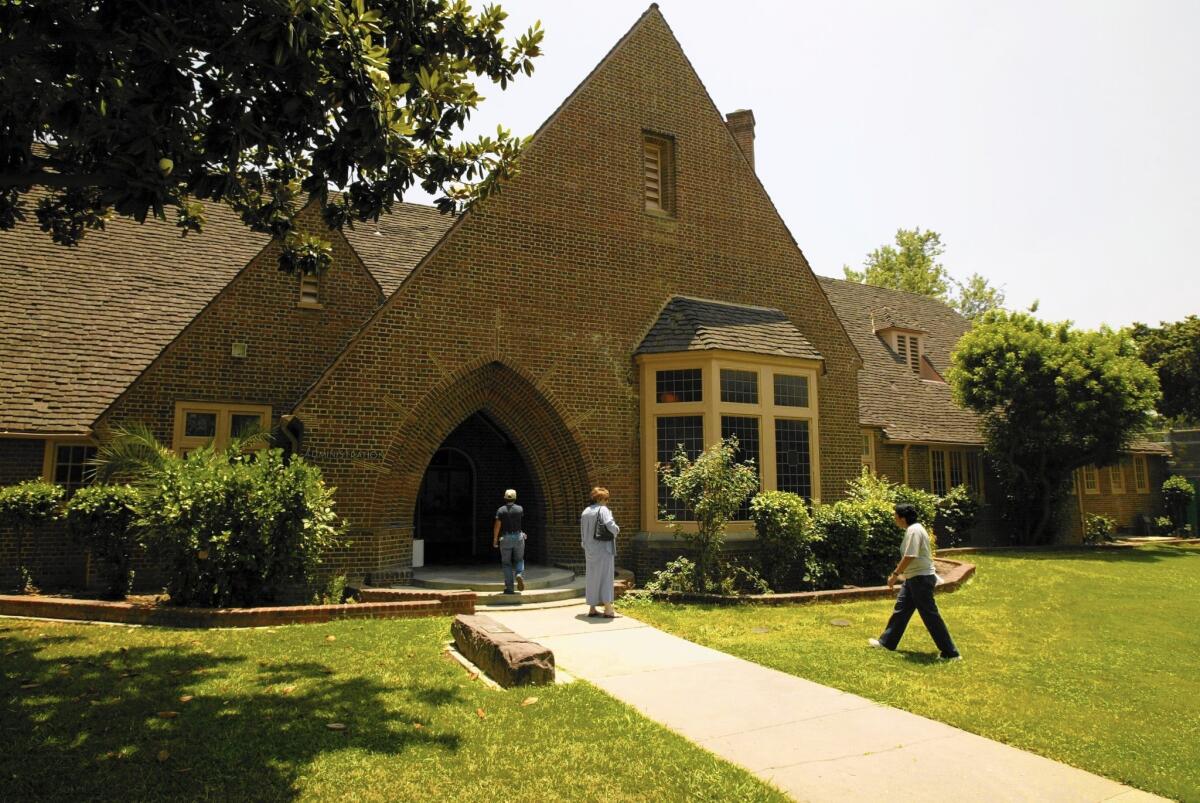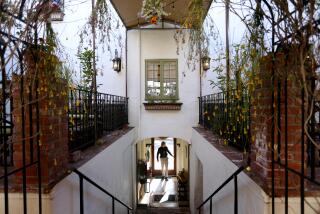Whittier sees hope in plan to transform historic Nelles property

The Whittier Conservancy is suing the state to stop the sale of the Fred C. Nelles Youth Correctional Facility.
Over a span of 113 years, the sprawling Fred C. Nelles Youth Correctional Facility in Whittier housed thousands of boys, and even a few girls, who had run into trouble with the law.
Since closing in 2004, it has been used as a filming location. Now, movie crews could soon give way to construction crews.
------------
FOR THE RECORD:
Whittier development: An article in the Nov. 2 California section about a project planned for the site of the former Fred C. Nelles Youth Correctional Facility said that the developer, Brookfield Residential Properties, purchased the property from the state three years ago for $42.5 million. The company struck a deal at that time with the state, but the sale is not expected to become final until 2015. —
------------
Brookfield Residential Properties plans a large retail, commercial and residential project on the 74-acre site, which it purchased from the state three years ago for $42.5 million.
The Nelles property, about 18 miles east of downtown Los Angeles, is one of the largest pieces of urban land to be considered for development in the region in many years, said D.J. Waldie, a Los Angeles author and historian. Waldie said the development could create additional affordable housing for an area that is “desperately in need.”
“There are still, a very few, undeveloped areas on the fringes of the county, but certainly this is one of the last large parcels to be developed within the core of the built up urban area of the county,” Waldie said. “There aren’t many like it.”
Because the property has not been on the city tax roll for more than a century, it hasn’t generated economic value for Whittier, city officials said. But the development brings a unique chance for growth in the city, they said, with up to 200,000 square feet of retail, office, restaurant and commercial space.
“It adds a significant dynamic to the city by adding a large tract of land to become a new neighborhood, essentially, in our community,” said Jeff Collier, Whittier’s city manager. “Much of Whittier is built out and we haven’t had significant new housing opportunities for our residents for many years.”
The city expects to receive just under $500,000 a year in net tax revenue once the project is completed.
One point of dispute has been over how many of the eight historic buildings on the Nelles site should be preserved.
Originally, Brookfield’s proposed project would have demolished 50 structures and preserved and reused two of the historic ones: the superintendent’s residence and the administration building.
In the city’s recent draft environmental impact report, the developer’s plan changed, per Whittier’s recommendation, to preserve four historic buildings. Three would remain in place — the administration building, the superintendent’s residence and the chapel — and the assistant superintendent’s residence would be relocated on the property.
However, the Whittier Conservancy, a nonprofit organization, hopes to save more and will make that case to Brookfield in the next few weeks.
“We’re pleased that it appears that two additional buildings will be preserved, but that still leaves a majority of the historic resources at risk,” said Ted Snyder, president of the conservancy. “We believe that additional historic buildings can be saved and adaptively reused in a way that enhances the project economically and aesthetically.”
Brookfield’s plan could bring in up to 750 residential units — a mix of single-family homes, condos, townhomes and apartments, said David Bartlett, vice president of land for Brookfield Residential.
Over the next month, residents will have an opportunity to comment on the environmental impact report.
Public hearings will then be scheduled for the Historic Resources Commission, Planning Commission and City Council starting in January, after the report’s completion.
“We’ve tried to create a balance of uses and residential opportunities that are close to jobs, meet a variety of housing types and price points and fulfill the city’s long-term goal of creating a revenue stream from the property,” Bartlett said.
There are also plans to include educational displays on the property to showcase the history of Nelles, Bartlett said.
Nelles opened in 1891, before Whittier was incorporated, and served as a state reform school for boys and girls until 1916, when the girls were moved elsewhere. The property includes former dormitories, an auditorium, two gymnasiums and a mix of architectural styles.
With no regular maintenance, some of the buildings bear cracks and peeling paint. The grass is now overgrown and some of it is green only where film crews have spray-painted it.
Nelles is a California State Historical Landmark and was the longest-running state school for juvenile offenders in California.
When conservancy members and others toured the property in September, it was one of the few times some residents have been given a chance to see what sits behind the 15-foot-tall chain link fence topped with razor wire on Whittier Boulevard.
“People have been interested in it for so long and know so little about it,” Snyder said. “In a way, Nelles sort of put Whittier on the map back when it was founded.”
City Councilman Joe Vinatieri, a longtime Whittier resident, remembers reading in the newspaper about boys scaling the fences and escaping. If he ever misbehaved, he recalled, his father would threaten to send him to the “bad boy’s school.”
The facility remained largely a mystery to Vinatieri until he was in his 30s and began holding a Bible study class there every Monday night for 10 years.
Vinatieri describes what’s left of Nelles as blighted and rundown and said the development will have a “rising tide” effect.
“I think it helps out all the county area and all of Whittier and it’s a possibility it’s going to seep beyond just the city of Whittier,” Vinatieri said.
Twitter: @brittny_mejia
More to Read
Sign up for Essential California
The most important California stories and recommendations in your inbox every morning.
You may occasionally receive promotional content from the Los Angeles Times.











